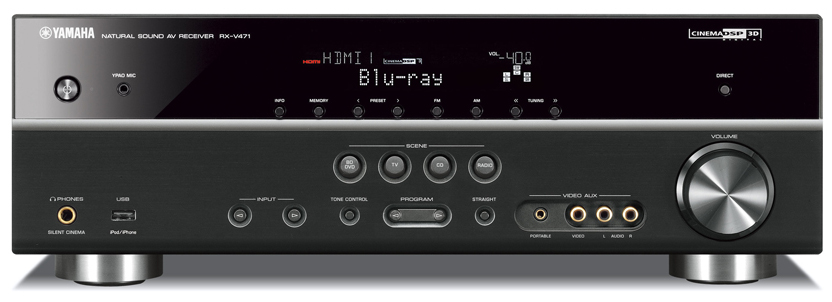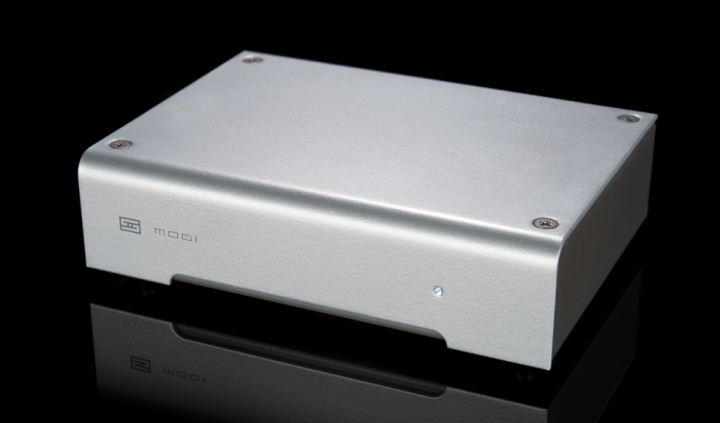17 July 2013
DAC and Soundcards
Products Reviewed:
- Generic Realtek Integrated Sound.
- Yamaha RX-471 HDMI AV Reciever with unspecified Burr-Brown DAC.
- Shiit Audio Modi USB DAC
When I set up my Yamaha RX-471 I percieved that music playing sounded better than music playing through identical speakers on my other system (using a an old stereo reciever). The Yamaha AV Tuner has an integrated Burr-Brown DAC and probably overall a better amplifier than the old tuner on my main stereo.

Putting an AV tuner on a purely stereo system seamed a little silly and advice from hi-fi sales in Cherry Hill and some research led to the conclusion that for the stereo a standalone DAC would be a better choice and permit the upgrade of each component individually. Due to the licensing issues surrounding HDMI most small manufacturers have gone with USB for their standalone DACs, Linux recognizes this as an external sound card. With an external DAC, you only have to replace the DAC to upgrade it, since amplifier technology doesn’t change very rapidly while DACs are still rapidly evolving. If my 20 year old receiver weren’t a very entry level model I probably wouldn’t be thinking about replacing it.
The Hifi store recommended a Dragonfly. My research showed that in its price range ($250) it was probably the best available product. But for about half of that the Schiit Modi was really well reviewed. I decided that the price of the Modi was so low that I could afford to not be happy with it. Besides everything I read about the technical aspects of DACS says that older Burr-Brown DACS were the best mass produced chips. Basically there are 2 approaches and a middle ground to building a Digital to Analog Converter. The cheap way is to use a single switch operating at a very high frequency, this approach, known as Sigma Delta, generates a lot of overhead noise which must be filtered out. The expensive way is known as ladder or R2R, and it uses a separate switch for each bit, so a 24 bit R2R chip would have 24 switches for each channel. R2R chips are much more expensive to manufacture than Delta Sigma. The chipmakers did two things: everything they could to improve their Delta Sigma designs and came up with a hybrid approach – having more than one switch but less than the full number, resulting in less noise to filter out, and these chips are still considerably cheaper than R2R chips. The unfortunate result is that TI no longer produces the Burr Brown designed R2R chips. This means that to get a true R2R DAC the chip either has to be custom fabricated or the manufacturer solders transistors onto a PCB board to make one by hand.
The question was whether I would be satisfied with a Sigma Delta DAC, and the modi seemed a great way to run the experiment – I could compare it to my sound card, and then have a point of reference (ears already used to listening to better than soundcard output) if and when I decided to buy a better DAC.
Initially I felt the Modi was an improvement over the integrated Realtek Sound. The reviewers who didn’t like the Modi called it Harsh. The more I listened the harsher it sounded to the point that I used the graphic eq in my software to lower the high-end.
I’m now back on the integrated sound, and need to plot my next step. One thought is to get a better sound card, which will also help when I rip vinyl. The other thought is to get a better DAC than the Modi, and the question is whether the Dragonfly will make me any happier. The Modi uses an AKM4393, the Dragonfly uses a more expensive Sabre ESS chip.
At the moment the RX-471 with the unspecified Burr-Brown chip is in the lead. I think the decision whether to move up one step on the soundcard front vs buying a DAC will come down to whether the Dragonfly or something near to it in price satisfies me, if not I’ll take the small cheap step. And I have a new Shiit Modi on sale for 30% off retail.

Update 2019
Eventually I went with an better sound card for the dedicated stereo, I later picked up a Dragonfly on sale at a really low price. The Dragonfly is definitely better than the DAC I tried out a few years ago. Due to my whole home audio solution I’m using the HifiBerry sound-card in a Pi and am pretty satisfied with the result.